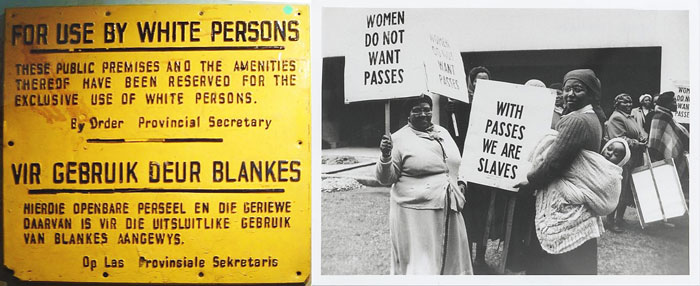Case Study 2:
Ghettos and the Colonial Project in Southern Africa
Seminar Presentations:
Dawne Y. Curry: “Their World is a Ghetto: Squatters, Space, and Power in 1940s Alexandra, South Africa”
Friday, October 24, 2014
Mhoze Chikowero: “‘Skokiaan’: Criminalized Leisure, Underclass Defiance & Self-Narration”
Friday, October 31, 2014
Alex Lichtenstein: “Citizens, not Subjects: Spatial Segregation and the Making of Durban’s African Working Class (Notes Towards a Critique of Mamdani)”
Thursday, November 13, 2014
Gavin Steingo: “Practices of Immobility: Popular Music Production and Sensory Perception in Soweto”
Friday, November 21, 2014
At the moment that the gates of the ghetto in Europe began to crumble, European colonialists revived the concept of the ghetto for application in Africa. At the turn of the 20th century, the British High Commissioner for South Africa instructed white colonists to create distinctly separate racial zones in the cities. The colonists’ efforts were soon encoded in legislation that came to encompass a native rural reserve system, pass laws, and an urban native location system, the legal scaffolding of the elaborately segregated apartheid system that eventually developed. The rise of racially segregated areas in South Africa were closely intertwined with the arrival of Europeans and the transformation of the economy from earlier indigenous pastoral and farming pursuits to new global mining enterprises—diamonds from the 1870s and gold from the mid-1880s. The spread of these global capitalist developments precipitated the increasing incorporation of indigenous people into the larger proletarianization process. The emergence of an African industrial working class not only entailed ongoing intra racial conflict among Dutch and English settlers and their respective elites and working classes, but also profound tensions among indigenous African people and both African and Asian immigrants. The ghettoization of indigenous and nonwhite people represented a key component in South Africa’s scheme of labor exploitation.
Mahatma Gandhi, in his struggle against the segregation in South Africa, turned to a comparison between South Africa’s treatment of Indians and the discrimination faced by Jews in Europe. In the years to follow, Gandhi repeatedly used the concept of the “ghetto” in order to shine light on the spatial segregation at the heart of white supremacy. Throughout the interwar period, ideas of social Darwinism strongly influenced imperial ambitions throughout Europe and the West. Based on the idea that the white race was “the fittest” to maintain global power and empire, many eugenicists and racial theorists argued that segregation presented the only hope for white “preservation.” South Africa, the U.S., and Nazi Germany all drew heavily on social Darwinist and eugenicist ideas.
Continue to Case Study 3 »»
